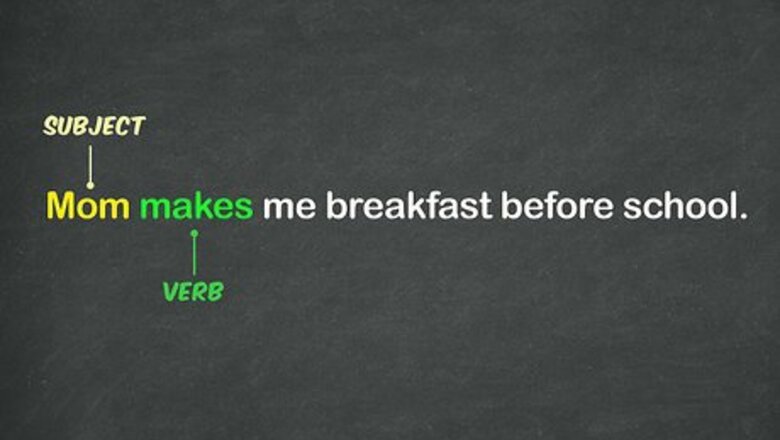
views
Using a Comma in a Compound Sentence
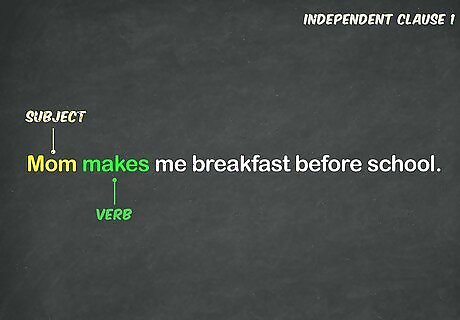
Write a complete thought using both a subject and a verb. This is called an independent clause, as it is a group of words that has both a subject and verb and forms a complete thought. For example, “Mom makes me breakfast before school.” In this example, “mom” is the subject and “makes” is the verb. It also forms a complete thought or sentence.
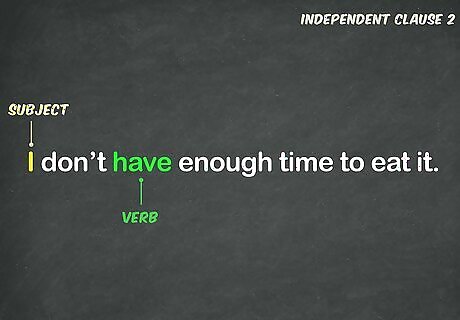
Write a second complete thought that closely relates to the first. Your second independent clause should also contain both a subject and a verb, but it should relate to your first independent clause. For example, “I don’t have enough time to eat it.” This independent clause closely relates to the first clause you wrote and contains both a subject, “I” and a verb, “have.” The nature of the relation will determine which coordinating conjunction is used to connect the two thoughts. For instance, if the second thought follows the first thought chronologically, the word “and” is used to connect the two thoughts. If the second thought contradicts the first thought, the word “but” is used to connect the two thoughts.
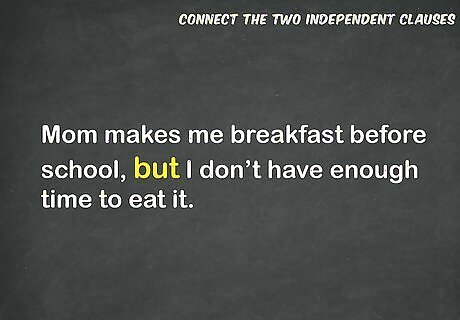
Connect the two independent clauses. To form a compound sentence, you will need to connect your two independent clauses together with a coordinating conjunction. There are 7 commonly used coordinating conjunctions or words. Coordinating conjunctions include: and, but, yet, nor, or, for, so. One of the easiest ways to remember the coordinating conjunctions is to form an acronym. The most commonly used acronym is: FANBOYS (F-for, A-and, N-nor, B-but, O-or, Y-yet, S-so). For example, “Mom makes me breakfast before school, but I don’t have enough time to eat it.”
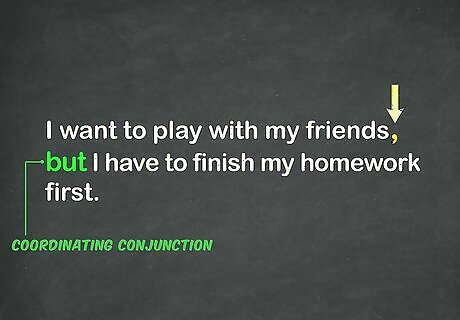
Insert a comma before the coordinating conjunction. A comma is used to add clarity. Therefore, it’s important to use a comma when connecting two independent clauses, as you want to ensure your readers know the two are related. For example, “I want to play with my friends, but I have to finish my homework first.” Make the beginning of the second independent clause lowercase. Now that you have both a coordinating conjunction and a comma in place, you need to make the first letter of your second independent clause lowercase. In the above example, you would need to keep the “I” capitalized as it is a proper pronoun. However, another example would be, “I want to go to the park by myself, but my little sister wants to come with me.” In this case, the “m” in “my” was capitalized when it was a standalone independent clause: “My little sister wants to come with me.” Now that it’s part of a compound sentence, connected by a comma and a coordinating conjunction, the “m” is lowercase.
Using a Comma in a Complex Compound Sentence
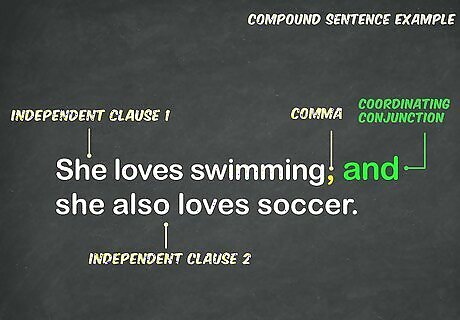
Write a compound sentence. Join two independent clauses, or complete thoughts, together using both a coordinating conjunction and a comma. For example, “She loves swimming, and she also loves soccer.”
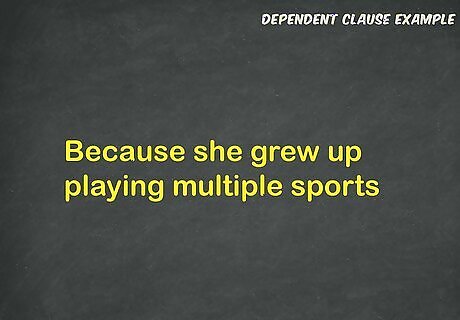
Construct a dependent clause. Unlike an independent clause, a dependent clause does not form a complete thought because it begins with a subordinating word (when, if, because). However, make sure the dependent clause still relates to your compound sentence, as your goal is to connect the two, by forming a complex compound sentence. For example, “Because she grew up playing multiple sports” isn’t a complete sentence.
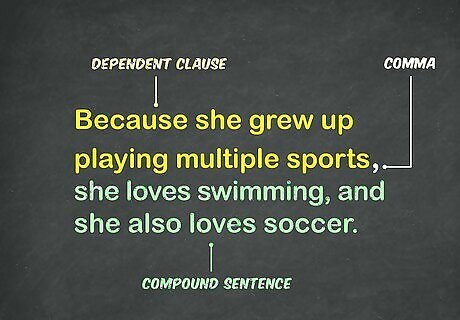
Connect a compound sentence and dependent clause with a comma. When the dependent clause comes before the compound sentence, you can use a comma to connect the two to form a complex compound sentence. For example, “Because she grew up playing multiple sports, she loves swimming, and she also loves soccer.”
Avoiding Common Mistakes
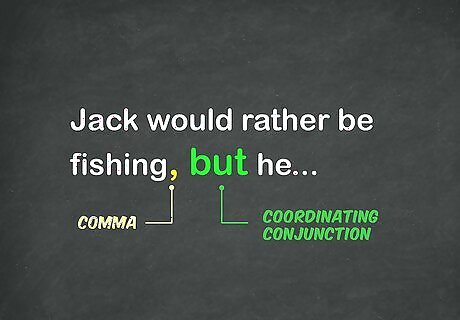
Use a comma before the coordinating conjunction. When forming a compound sentence, make sure the comma is always placed before the coordinating conjunction and not after it. For example, “Jack would rather be fishing, but he…”

Avoid a comma splice. A comma splice occurs when you use a comma with two independent clauses, without using a coordinating conjunction. For example, “Jack would rather be fishing, he’s at work.” This is incorrect, as a coordinating conjunction wasn’t used. The two independent clauses should have been formed into two complete sentences using a period. “Jack would rather be fishing.” “He’s at work.” Another option is to use a semicolon: "Jack would rather be fishing; he’s at work." You could also use a coordinating conjunction: "Jack would rather be fishing, but he’s at work."
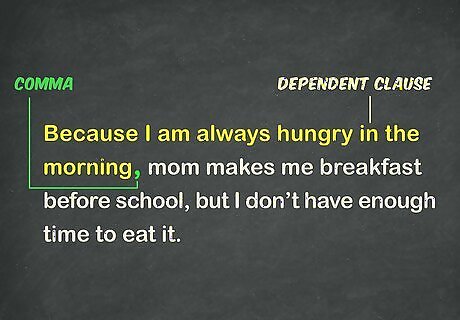
Use a comma when the dependent clause comes first. When forming a complex compound sentence, if the dependent clause is before the compound sentence, you can use a comma. Otherwise, if the dependent clause comes after a comma isn’t needed. For example, “Because I am always hungry in the morning, mom makes me breakfast before school, but I don’t have enough time to eat it.” You would not use a comma if the complex compound sentence was, “Mom makes me breakfast before school, but I don’t have enough time to eat it because I don’t wake up early enough.”




















Comments
0 comment